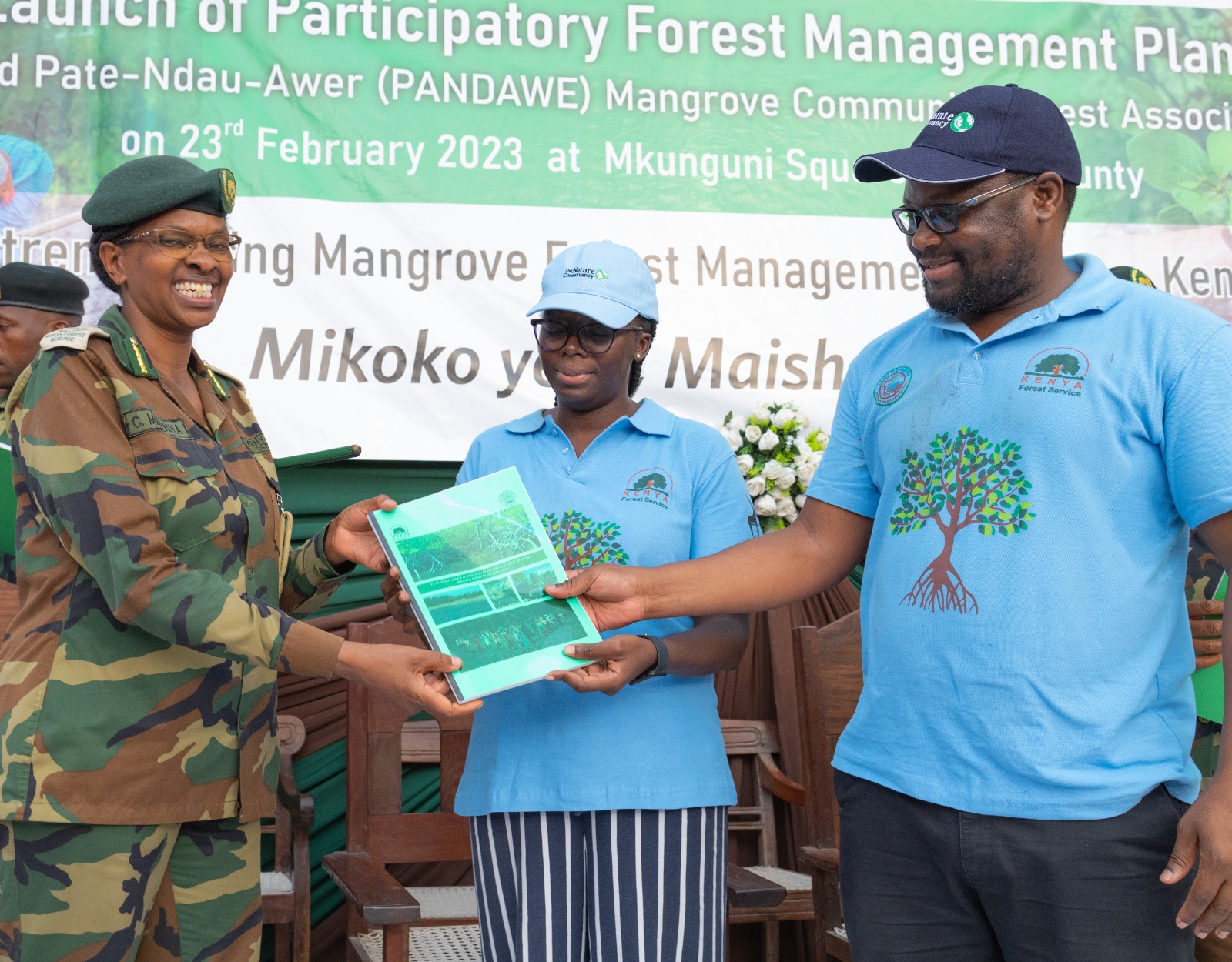The Kenya Forest Service and two local community associations have signed agreements to co-manage about 26,000 hectares of mangrove forest in Lamu County over the next five years.
With support from The Nature Conservancy (TNC) and other partners, the forest management agreement signed with the Pate-Ndau-Awer secures the legal mandate of co-managing 16,000 hectares of mangrove forest area.
A separate agreement with Lamu Community Forest Association secures an additional 10,000 hectares. It will be guided by Participatory Forest Management Plans (PFMPs).
The initiative also aims to enhance protection, restoration, and management of mangroves by communities living adjacent to the forest while ensuring benefits to residents of Lamu County, most of whom depend on the marine environment for their livelihoods.
It follows the 2019 lifting of a ban on mangrove logging in Kenya’s five coastal counties, which had been implemented in 2018 after local communities protested due to high dependence on mangrove harvesting. The ban was subsequently lifted in Lamu County, following a petition by the community and the county government.
“I am excited to see the level of partnership demonstrated in this initiative. It will enhance restoration and conservation of mangrove forests while improving livelihoods for Lamu communities. It will also help in meeting the new national target of 30% tree cover by 2050 that was set by the government last year,” said Julius Kamau, the Kenya Forest Service Chief Conservator of Forests.
More than 60% of mangroves in Kenya occur in Lamu and the surrounding islands. These forests provide multiple goods and services to people in Lamu, both wood and non-wood resources, as highlighted in the National Mangrove Ecosystem Management Plan 2017 – 2027.
The Kenya Forest Service holds the overall mandate of ensuring sustainable management and conservation of Kenyan forests and forest resources for socio-economic development of the country. This includes promotion of community participation in conservation and management of state forests.
Kenya Forest Service led the development of the forest plans and agreements that were co-funded by TNC and other partners. Technical support was provided by the Kenya Marine and Fisheries Research Institute, Kenya Forestry Research Institute, County Government of Lamu and Kenya Wildlife Service as well as Pate Marine Community Conservancy and Awer Community Conservancy.
“We are committed to supporting our communities in implementing the forest plans and agreements, including investing in nature-based solutions or projects for community development and conservation benefits,” said
Tashrifa Bakari Mohamed, Lamu County Executive Committee Member for Lands, Physical Planning, Urban Development, Energy, Water and Natural Resources, Infrastructure and Public Works representing the Lamu County Governor.
Through the Forest Management Act 2016, communities were supported to form and register associations that prepare forest management plans followed by intense negotiation of forest management agreements with KFS. Participatory Forest Management Plans are critical tools for helping conserve biodiversity and enhance people’s livelihoods while ensuring the sustainable use of forests.
TNC’s Africa Fisheries Strategy Manager, Mr. George Maina said the institution is committed to working with partners to ensure a resilient coast, reduced emissions, thriving communities and marine management grounded in science.
Kenya Marine and Fisheries Research Institute’s Chief Scientist and coordinator of the mangrove research program, Dr. James Kairo, said the organization is committed to providing technical support and resources to ensure the science-based implementation of Mangrove PFMPs and Forest Management Agreements (FMAs).
Effective mangrove management requires elaborate engagement with the local communities. This is further emphasized in the Kenya’s national mangrove management plan (2017-2027), and more broadly in various national and international legal frameworks and agreements including Kenya Constitution of 2010.
